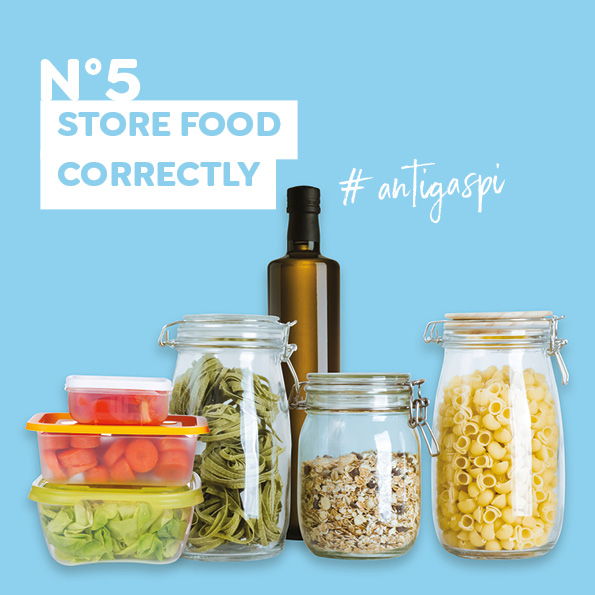
Storage has a great impact on the shelf life of foodstuffs.
The way food is stored determines its shelf life. It depends, among other factors, on light, oxygen and storage temperature. Although each product has its own specific storage requirements, there are some clear general rules.
Store in a dark place: light speeds up the breakdown of oils and fats. Use airtight containers and dark-coloured glass bottles, or keep these products in a dark place (e.g. a storeroom).
Store in a dry place: store pasta, rice, cornflakes, honey and sugar in a dry place and at room temperature, preferably in an airtight container.
Store in an airtight container: oxygen speeds up a large number of breakdown processes. By putting foodstuffs in an airtight container or by vacuum-packing them, you can prevent food from becoming rancid, mouldy, discoloured, etc.
Keep chilled: the best way to prevent food from spoiling is to keep it chilled or in a cold place (cold storeroom, fridge or freezer). The ideal storage temperature is indicated on many foods. Make sure that the temperature in your fridge is low enough (max. 5°C for the middle shelf).
Freezing (-18°C) is a good alternative to keep food for longer. Most products can be frozen: bread for up to three months, dairy products for up to six months, and meat and fish for up to one year.
You can find detailed information on storing different types of food here.
Keep your storeroom, pantry and cupboards clean and free of crumbs and food scraps. This is the only way to prevent parasites from multiplying and contaminating foods.
)
